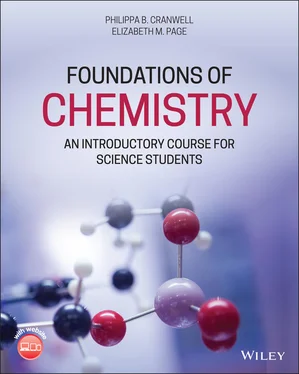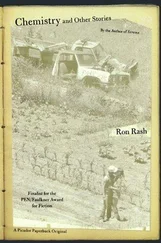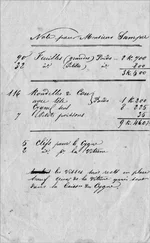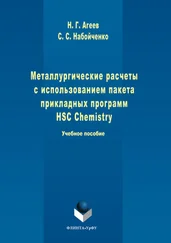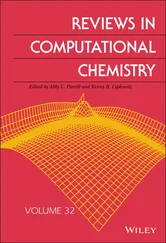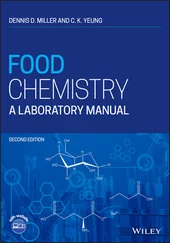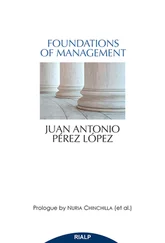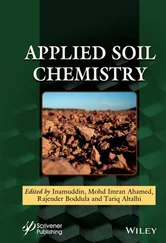9 Chapter 8Figure 8.1 Plot of the concentration of A and B against time for the reactio...Figure 8.2 Apparatus to measure the amount of gas produced in a reaction ove...Figure 8.3 The reaction of NO 2with F 2: (a) successful collision leading to ...Figure 8.4 Energy profile for an exothermic reaction.Figure 8.5 Boltzmann distribution of molecular energies.Figure 8.6 Boltzmann distribution of molecular energies at two different tem...Figure 8.7 Energy profile for a catalysed (red) and uncatalysed (blue) react...Figure 8.8 Plot of concentration of reactant A against time.Figure 8.9 Plot of [Br 2] against time with a tangent drawn at t = 150 second...Figure 8.10 Plot of rate against concentration of Br 2.Figure 8.11 Plots of concentration against time for a zero‐, first‐, and sec...Figure 8.12 (a) Plot of rate against concentration for a zero‐order reaction...Figure 8.13 Integrated rate expression plots: (a) plot of [A] tagainst time ...Figure 8.14 Determination of the half‐life of a first‐order reaction.Figure 8.15 The half‐life of a zero‐order reaction decreases through the rea...Figure 8.16 The half‐life of a second‐order reaction increases through the r...Figure 8.17 An Arrhenius plot for the decomposition of nitrogen dioxide, NO 2
10 Chapter 9Figure 9.1 The Cu 2+/Cu half‐cell.Figure 9.2 Two half‐cells connected together to form an electrochemical cell...Figure 9.3 Standard hydrogen electrode.Figure 9.4 Measuring the standard reduction potential of a Cu 2+(aq)/Cu(s) ha...Figure 9.5 A Cl 2(g)/Cl −(aq) and Fe 2+(aq)/Fe(s) electrochemical cell.Figure 9.6 A variety of alkaline batteries that are examples of galvanic cel...Figure 9.7 Sections through (a) a carbon–zinc battery; (b) a zinc–manganese(...Figure 9.8 Lithium‐ion batteries.Figure 9.9 Hydrogen–oxygen fuel cell.Figure 9.10 Schematic diagram of an electrolytic cell.
11 Chapter 10Figure 10.1 Periodic table showing periods and groups with different areas s...Figure 10.2 Electron filling of shells in magnesium and calcium.Figure 10.3 The atomic radius ( r ) of an atom is defined as half the distance...Figure 10.4 The atomic radii of Group 2 elements.Figure 10.5 First ionisation energy of Group 2 elements.Figure 10.6 Electronegativity values of Group 7 (17) elements (Pauling scale...Figure 10.7 Atomic radii of the elements in Period 2.Figure 10.8 Trends in atomic radius across and down the periodic table.Figure 10.9 First ionisation energy of the elements in Periods 2 and 3.Figure 10.10 Electronegativity values (Pauling) for Period 2 and Period 3 el...Figure 10.11 Trends in electronegativity across the periodic table. Note tha...Figure 10.12 Comparative sizes of Na and Na +(not to scale).Figure 10.13 Comparative sizes of F and F −(not to scale).Figure 10.14 Variation in the radius of stable ions of Period 3 elements.
12 Chapter 11Figure 11.1 The periodic table with the different areas shaded.Figure 11.2 The elements (a) lithium (freshly cut), (b) sodium (under minera...Figure 11.3 Atomic radii for the Group 1 metals, showing increase down the g...Figure 11.4 First ionisation energies of the Group 1 metals showing decrease...Figure 11.5 Melting points of the Group 1 metals.Figure 11.6 Comparison of the atomic radii of Group 1 and Group 2 metals.Figure 11.7 Sum of the first and second ionisation energies of Group 2 eleme...Figure 11.8 Melting points of the Group 2 elements.Figure 11.9 Enthalpy changes occurring when an ionic solid dissolves in wate...Figure 11.10 Hydrated sodium and chloride ions, as in an aqueous solution of...Figure 11.11 (a) Pure ionic bonding between a metal cation and anion; (b) an...Figure 11.12 (a) Delocalisation in the carbonate ion makes all C—O bonds equ...Figure 11.13 Sharing of electrons in Cl 2and covalent bond formation.Figure 11.14 Electronegativities of the Group 7(17) elements.Figure 11.15 Bond enthalpies of the Group 7(17) elements.Figure 11.16 (a) Lone pairs in a F 2molecule; (b) repulsion between lone pai...Figure 11.17 Atomic radii of the elements in Period 4.Figure 11.18 First ionisation energy of the elements in Period 4.Figure 11.19 Coordination complexes: (a) TiCl 4; (b) Cl −donating a lon...Figure 11.20 (a) A complex containing a central metal atom with six ligands;...Figure 11.21 (a) A complex containing a central metal atom with four ligands...Figure 11.22 A complex containing a central metal atom with four ligands in ...Figure 11.23 (a) [Ag(NH 3) 2] +a linear coordination complex with coordination...Figure 11.24 Colours of some first‐row transition metal complexes in aqueous...Figure 11.25 Absorption of red wavelengths from visible light by a solution....Figure 11.26 (a) Five d orbitals have equal energy in a free ion. (b) When s...
13 Chapter 12Figure 12.1 The different ways that ethanoic acid is represented by each typ...Figure 12.2 Display and skeletal formulae for some simple organic compounds....Figure 12.3 Some members of the alcohol homologous series.Figure 12.4 (a) The structure of morphine; (b) the structure of propan‐2‐one...Figure 12.5 The structure and names of some commonly encountered functional ...Figure 12.6 The two component parts of an ester. The ester group itself is h...Figure 12.7 Chain isomers of C 4H 10.Figure 12.8 (a) Butane molecules; (b) 2‐methylpropane molecules.Figure 12.9 Positional isomers of butanol, C 4H 10O.Figure 12.10 Functional groups isomers of C 2H 6O.Figure 12.11 The difference E and Z ( trans and cis ) isomers.Figure 12.12 A brief summary of the hierarchy of priority when using Cahn–In...Figure 12.13 The R and S forms of valine.Figure 12.14 The R and S forms of thalidomide.Figure 12.15 A scheme to summarise the different types of isomerism discusse...Figure 12.16 A figure depicting the different types of arrows used within or...Figure 12.17 (a) Curly arrows showing the attack of iodide to a positive car...Figure 12.18 Examples of some electrophiles. (a) A carbocation: in this case...Figure 12.19 Examples of some nucleophiles. (a) A carbanion: in this case, t...Figure 12.20 Examples of radical species. Note that the radical is always sh...Figure 12.21 Electrophilic addition of bromine to pent‐1‐ene.Figure 12.22 Nucleophilic addition of hydride to pentanal.Figure 12.23 Electrophilic aromatic substitution of benzene with chlorine.Figure 12.24 Nucleophilic substitution of 1‐chloropropane with iodide to giv...Figure 12.25 Elimination of HCl in 1‐chloropropane to give prop‐1‐ene.Figure 12.26 Condensation of water with ethanoyl chloride to give ethanoic a...
14 Chapter 13Figure 13.1 (a) A fractionating column.(b) The fractions.Figure 13.2 (a) The bonding between two atoms of chlorine in the molecule ClFigure 13.3 Curly arrows showing the movement of electrons in radical substi...Figure 13.4 Naturally occurring alkenes linoleic acid and limonene.Figure 13.5 (a) A sigma (σ) bond and an electron cloud; (b) the structure of...Figure 13.6 The electron clouds in chloromethane and how they are distended ...Figure 13.7 (a) The p orbitals on ethene and their overlap to form a π bond;...Figure 13.8 (a) Two test tubes, the left containing a mixture of bromine wat...Figure 13.9 Reaction of bromine with ethene.Figure 13.10 Reaction of bromine water with ethene.Figure 13.11 Reaction of prop‐1‐ene with HBr.Figure 13.12 Curly arrows to show the reaction of prop‐1‐ene with HBr.Figure 13.13 Curly arrows to show an alternative reaction of prop‐1‐ene with...Figure 13.14 Stability of carbocations.Figure 13.15 Reaction between prop‐1‐ene, phosphoric acid, and water.Figure 13.16 Reaction of an alkene with hydrogen in the presence of a metal ...Figure 13.17 (a) A molecule of ethyne; (b) the p orbitals on ethyne and how ...Figure 13.18 (a) Reduction of but‐2‐yne to propane with hydrogen and palladi...
15 Chapter 14Figure 14.1 (a) Hydrogen bonding between two ethanol molecules; (b) hydrogen...Figure 14.2 Structure of the primary alcohols ethanol, propan‐1‐ol, butan‐1‐...Figure 14.3 Structure of a secondary alcohol, propan‐2‐ol. Note that in a sk...Figure 14.4 Structure of a tertiary alcohol, 2‐methylpropan‐2‐ol.Figure 14.5 Possible oxidation states of primary alcohols.Figure 14.6 Oxidation of ethanol to ethanal or ethanoic acid using acidified...Figure 14.7 The dichromate(VI) ion is reduced to chromium(III) when it is us...Figure 14.8 Oxidation of a secondary alcohol.Figure 14.9 Nucleophilic addition into an aldehyde with KCN.Figure 14.10 Test for an aldehyde with Brady's reagent (2,4‐DNPH).Figure 14.11 Test for an aldehyde with Tollen's reagent (silver mirror test)...Figure 14.12 Hydrogen bonding between a carboxylic acid and water.Figure 14.13 (a) The acidic proton in a carboxylic acid; (b) reaction of but...Figure 14.14 Reduction of butanoic acid to butan-1-ol with lithium aluminium...Figure 14.15 (a) Identification of the ester group; (b) naming an ester; (c)...Figure 14.16 (a) Cleavage of an ester under acidic conditions; (b) cleavage ...Figure 14.17 Reaction of a carboxylic acid and an amine to make a salt.Figure 14.18 (a) Reaction of an acid chloride and an amine to make an amide;...Figure 14.19 (a) Cleavage of an amide under acidic conditions; (b) cleavage ...Figure 14.20 An amide and the different classes of amine.Figure 14.21 Reaction of ethylamine with hydrochloric acid to give the ethyl...Figure 14.22 Reaction between chloroethane and ammonia to give ethylamine.Figure 14.23 (a) A nitrile; (b) reduction of a nitrile to an amine; (c) hydr...Figure 14.24 Reaction of chloroethane with sodium cyanide to give propanenit...
Читать дальше
